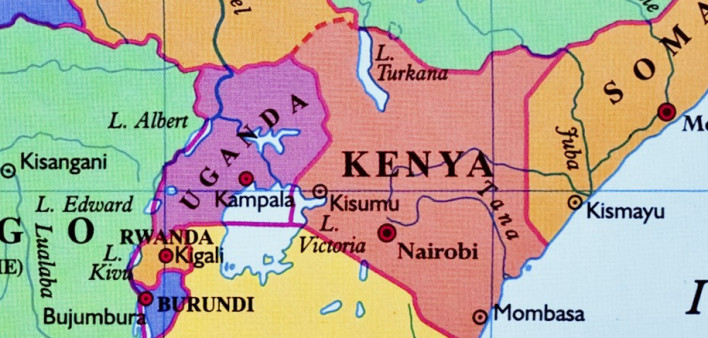A study that provided Truvada (tenofovir disoproxil fumarate/emtricitabine) as pre-exposure prophylaxis (PrEP) to men and women in rural Kenya and Uganda yielded better-than-expected results, resulting in an HIV acquisition rate three quarters lower than would be expected without PrEP.
Catherine A. Koss, MD, of the University of California, San Francisco presented findings from the SEARCH study at the International AIDS Conference, which was held virtually last week.
The study was conducted in 16 rural communities in eastern and southwestern Uganda and western Kenya. PrEP was offered to HIV-negative men and women who had an HIV-positive partner, were considered to be at high risk of contracting the virus according to a risk score or who said they considered themselves to be at high risk.
PrEP was offered, with the opportunity to start Truvada the same day, at health fairs or clinics during campaigns for blanket testing for HIV and other diseases in the studied communities between 2016 and 2017. During this period, PrEP was also offered to particular at-risk populations in which HIV rates are high, including fishers and transportation and bar workers. During 2016 to 2019, PrEP was offered on an ongoing basis in each rural community included in the study.
Follow-up visits for PrEP-related monitoring were offered at clinics, at people’s homes or at community sites, such as beaches or trading centers.
People receiving PrEP were scheduled to receive HIV antibody testing before receiving PrEP and at weeks 4, 12 and every 12 weeks thereafter through week 144.
Those who tested positive for the virus were offered the chance to start antiretroviral (ARV) treatment on the same day, with standard regimens offered to people taking HIV treatment for the first time—known as first-line regimens. These individuals received a viral load test and testing to determine any drug resistance in their virus before starting ARVs. Then they were slated to receive subsequent viral load test within 12 months of starting treatment. Those who said they had been adhering well to their daily Truvada regimen provided a hair sample for testing to determine actual adherence.
The study tested 74,541 people 15 years old and older who turned out to be HIV negative. A total of 58,909 of them were determined not to be at elevated risk for the virus, leaving 15,632 (21%) considered to be at elevated risk. Within that group, 5,447 people (35%) started PrEP. And 4,260 members (78%) of that group had at least one HIV test after initiating Truvada.
Of those who started PrEP, 49% were adolescent girls or women. Twenty-nine percent were 15 to 24 years old, and 16% were 45 years old or older. Nineteen percent had an HIV-positive partner. Twenty-two percent worked in the fishing, bar or transport industries. Twenty-one percent were unmarried, 51% were in a monogamous marriage and 19% were in a polygamous marriage. Forty-nine percent of the men were circumcised, which reduces female-to-male transmission of HIV by about 60%.
Two thirds of those who started PrEP attended their week 4 study visit. Thirty percent were still taking Truvada by week 24. Eighty-three percent of the participants stopped PrEP at least once. Half of those who stopped later restarted.
Ninety percent of those who reported current HIV risk received Truvada refills, and 70% of those currently at risk reported adhering well to the daily regimen.
During 7,150 cumulative years of follow-up, 25 participants tested positive for HIV, for an infection rate of 0.35 infections per 100 cumulative years of follow-up. This compared with an expected HIV acquisition rate of 0.92 infections in a matched control group that did not receive Truvada, meaning that PrEP was associated with a 74% reduction in the HIV acquisition rate in the group studied in SEARCH. This reduction was statistically significant, meaning it is unlikely to have been driven by chance.
The HIV acquisition rate per 100 cumulative years of follow-up was 0.40 new infections among women, compared with an expected rate of 1.52, meaning that PrEP was associated with a statistically significant 74% reduction in the HIV rate among women. Among men, the HIV rate was 0.24, compared with an expected 0.40—a 40% reduction that was not statistically significant.
Among the 25 people who tested positive for HIV, the women had a median age of 28 years old, and the men had a median age of 35 years old. Upon entering the study, nine (36%) of those who later acquired HIV reported having an HIV-positive partner.
Twenty-four (96%) of those who contracted HIV started ARVs, including 16 (67%) who started the same day as their diagnosis and 21 (88%) who started within seven days.
Of the 22 people due for a repeat viral load test after starting ARVs, 19 received the test, and 18 (95%) of that group had a fully suppressed viral load (below 1,000).
One participant was found to have HIV that was resistant to drugs in the non-nucleoside reverse transcriptase inhibitor and nucleoside/nucleotide reverse transcriptase inhibitor classes. They had transmitted mutations (as opposed to mutations acquired after contracting HIV) in their virus that conferred low-level resistance to tenofovir disoproxil fumarate (TDF), one of the two drugs in Truvada. The virus also had the M184V mutation, which confers high-level resistance to emtricitabine, the other drug in Truvada.
This person received HIV treatment with TDF, emtricitabine and lamivudine (the drugs in the Symfi and Symfi Lo combination tablets). This regimen did not fully suppress the virus. After receiving the results of the drug-resistant testing, the individual was switched to a second-line ARV regimen; a subsequent viral load test is pending.
The researchers concluded that offering PrEP to a population of people in rural Uganda and Kenya was associated with a lower rate of HIV acquisition among people who started PrEP and were then tested for the virus compared a matched control group that did not receive Truvada as HIV prevention.
To see all POZ coverage of AIDS 2020 Virtual, click here.







Comments
Comments